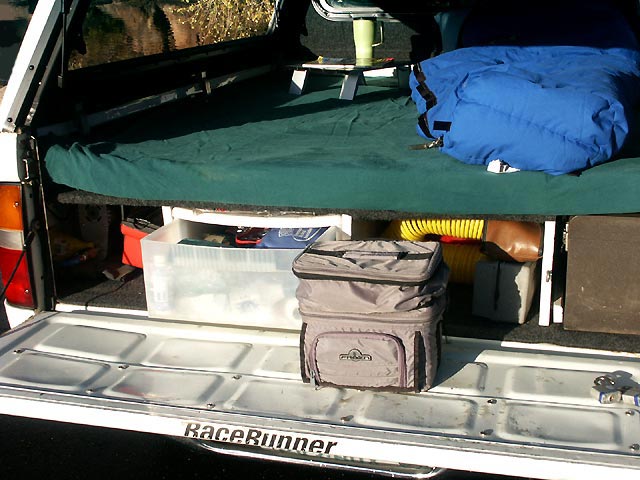
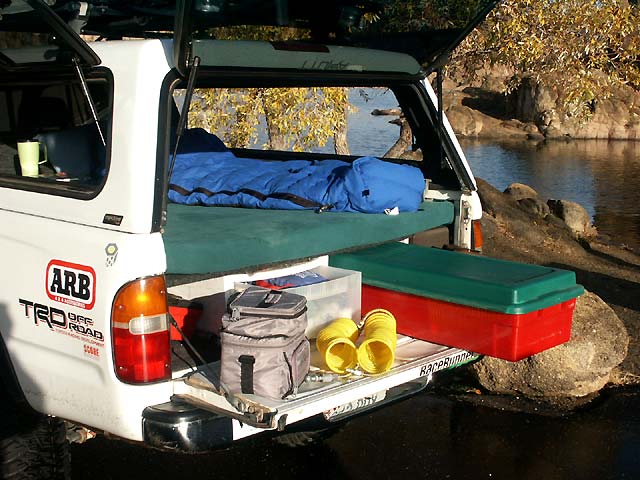
It was crucial to build all of the compartments to fit the bins EXACTLY - so that everything fits super-snug so as not to allow any movement while on long off-road journeys. This is imperative to prevent things from coming apart and getting ruined from vibration and off-road movement. Here you can see the other water storage bin, some recovery straps, and the recovery hardware box (the small red and black box).
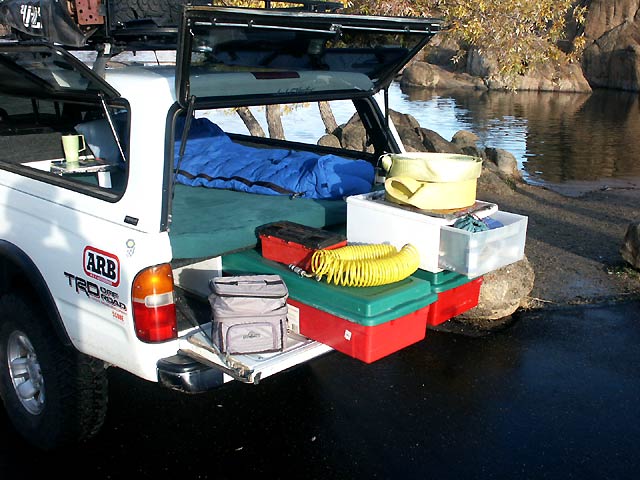
The water bins were actually made to be containers for the storage of Christmas wrapping paper. My wife, Sharon, found these gems after I had told her of my dilemma trying to figure out water storage containers that would fit the dimensions I was looking for. These bins just so happen to hold (22) 1.5 liter water bottles perfectly in each bin (meeting the "tight-fit" requirement). This makes for a total of 66 liters of drinking water. The great thing about this is that the water is portioned into separate containers, eliminating the risk of losing all of the precious liquid due to a puncture or leak, or even contamination, that might be possible with a conventional large water tank. It is also nice because you can keep a few of these bottles in the camper or cab for convenient access and just rotate them as necessary. The water is kept somewhat more insulated in these bins, and always in the dark - to prevent cooties from growing in the bottles. The water manages to stay cool, even in the summer. This water comprises our drinking and cooking water only. We keep a separate container with a valved spout for dish washing, and general wash water. (When in Baja, this is filled with ocean water or reverse osmosis water obtained at local water purifying facilities.)
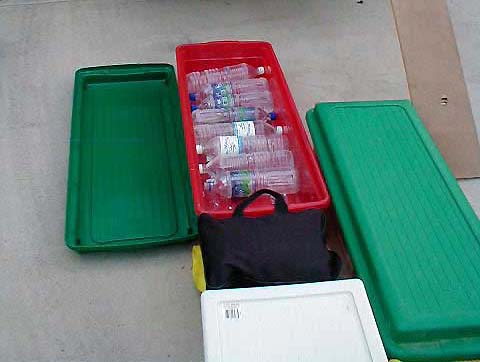
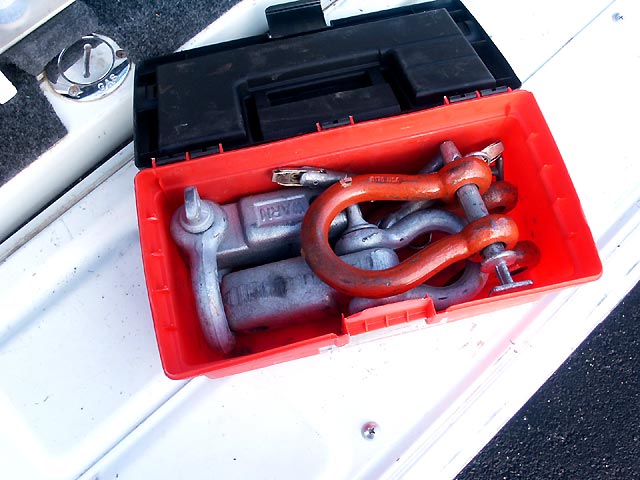

My Moonstone PCT II Dryloft down sleeping bag on the left, and my wife's Moonstone 800/Zone 2 Dryloft down bag on the right. COZY! I am about 5'-11" and I fit just perfect inside the shell and can sleep comfortably with the tailgate and rear window closed. For anyone who is taller, sleeping inside a closed camper shell in the 6'-0" Tacoma bed would be something to consider based on personal comfort. Some kind of a tailgate vestibule might be required, or an altogether different camper setup.
